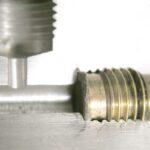Once again, it is winter: a time for playing in the snow, wearing layers of knits, drinking hot chocolate, and sitting cozily by the fire to keep warm throughout the cold months. During winter, people also tend to spend more time indoors, preferring to stay home where they have control over the temperature.
However, your winter at home would not be comfortable when, in the middle of a snowstorm, your heating system suddenly fails. Homeowners should schedule an annual tune-up before winter to prevent such a thing from happening. It is inconvenient, uncomfortable, and dangerous to lose heating in winter.
If you have not had the chance to get a tune-up, there are still ways to prevent your heating system from breaking down in the middle of winter. As soon as you recognize these signs and call for a furnace repair, your home will remain warm and cozy throughout the cold months.
Cold Spots Throughout the House
If the furnace is running, it should feel warm and cozy throughout the house. If there are cold spots, it likely is not a poltergeist haunting your home. Likely, the culprit is your furnace.
A furnace has to be the right fit for the space. Otherwise, it would not be capable of providing warmth throughout the entire house.
Moreover, cold spots can also appear if the furnace is not heating enough. This could happen due to a variety of reasons. A clogged filter, for example, can block the hot air coming from the furnace. By simply replacing the filter, you can restore the furnace to its original performance.
If the filter is not the problem, check the vents for any obstruction. Dust and other debris can also accumulate within the vents, preventing certain areas of the house from getting heat. Ducts, too, require regular cleaning to prevent blockages.
Finally, make sure that the thermostat is giving you an accurate reading. Try to move the thermostat away from the sun. Exposure to direct sunlight can affect its precision. It may give you an inaccurate reading, preventing you from setting your heating to the temperature you want.
However, call a professional if you still have yet to find the cause. They will properly diagnose the problem and make repairs before your heating system fully breaks down in the middle of winter.
Rising Electricity Bills
It is normal for your utility bills to increase during winter because you rely on heating to keep warm for several months. As the temperature outdoors plunges even lower, your furnace will have to work harder to generate heat throughout the house.
However, if you notice your utility bill is rising higher than average, your heating system might have started to struggle to keep the entire house warm. In moderate temperatures, your furnace should not be working at maximum.
It is worth investigating why you are paying more to keep yourself and your loved ones warm this winter. Factors such as a dirty filter can be contributing to your high utility bills. Dust accumulated on the filter obstructs the airflow, forcing the furnace to work harder to push warmth throughout the house.
Presence of Moisture
In general, home heating systems are known to dry the air by zapping the moisture. Some households have to re-inject the water into the air to increase humidity using a humidifier.
That is why, if you find moisture building up in ceilings and walls or windows, it is a sign of trouble. The presence of moisture in a room means that the air is not flowing efficiently throughout your home. The air is damp, and it is stagnant.
It could either be a problem with the vents. A blockade could be preventing warm air from reaching all areas of the house. It could also be your furnace unable to deliver warm air. Ask a professional to investigate the problem.
Everyone Feels Unwell
During winter, carbon monoxide poisoning is a real threat. Around 20,000 to 30,000 people across the United States are sickened due to accidental carbon monoxide exposure annually. About 500 pass away, most inside their own homes, due to carbon monoxide poisoning.
Because of its nature, the presence of carbon monoxide inside your home is hard to notice. It is colorless, odorless, tasteless gas. You would not know that you are exposed until you start experiencing symptoms.
If you and everyone at home are experiencing dizziness, a dull headache, nausea and vomiting, blurred vision, shortness of breath, weakness, confusion, and loss of consciousness, get out immediately. You are likely exposed to carbon monoxide. Getting out of the house and calling for emergency services will save your lives.
You can prevent carbon monoxide from spreading throughout your house through proper maintenance of your heating system. Using a carbon monoxide detector can also save your life.
Your furnace plays a significant role in keeping you and your loved ones comfortable and healthy throughout winter. It deserves to be properly maintained and repaired when needed.
 Mastering Online Masterclasses: Choosing the Right Online Violin Instructors
Mastering Online Masterclasses: Choosing the Right Online Violin Instructors  Empowering Healthcare Professionals: How WT Farley Oxygen Regulators Enhance Patient Care
Empowering Healthcare Professionals: How WT Farley Oxygen Regulators Enhance Patient Care  Elevate Your Collection: Unveiling the Beauty of Custom Wine Cellars in Ottawa
Elevate Your Collection: Unveiling the Beauty of Custom Wine Cellars in Ottawa  Enhancing Your Online Presence with Real Estate SEO Services
Enhancing Your Online Presence with Real Estate SEO Services  The Epitome of Luxury: Elevating Spaces with Imperial High-End Kitchen Cabinets
The Epitome of Luxury: Elevating Spaces with Imperial High-End Kitchen Cabinets  Pokémon go accounts- Exploring the reasons behind player demand
Pokémon go accounts- Exploring the reasons behind player demand  Pokemon go shortcut to greatness – Buy now
Pokemon go shortcut to greatness – Buy now  Online slot games for classic fruit machine lovers
Online slot games for classic fruit machine lovers  Ensuring Security In Online Fund Transfers: Understanding Fraud Prevention And Risk Mitigation
Ensuring Security In Online Fund Transfers: Understanding Fraud Prevention And Risk Mitigation 




